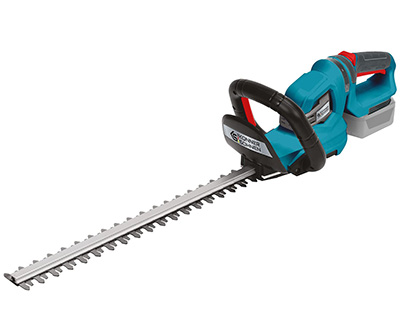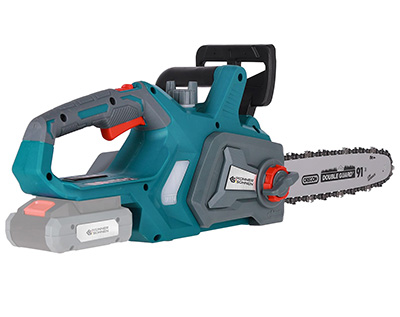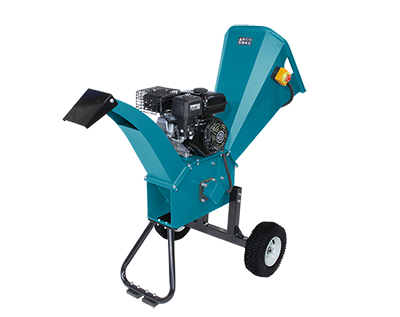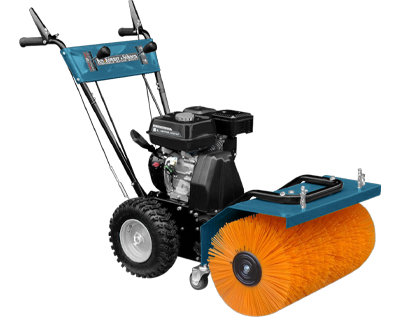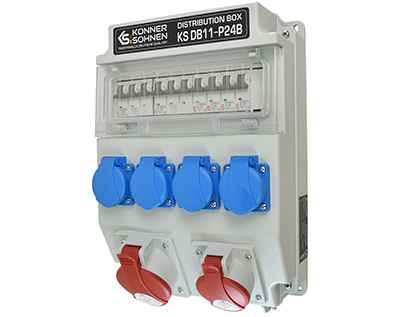The article is protected by copyright. Publishing the entire article or its parts without a clear reference to the source (a link to the Könner & Söhnen website) is not permitted.
Backup power solutions with inverter generator KS 6000iES ATS Version 2
With the KS 6000iES ATS Version 2, an automatic emergency power supply can be implemented without the generator having to be permanently installed.
Inverter generator KS 6000iES ATS is equipped with the ATS module, which enables a wide range of innovative backup power solutions. The generator supplies a "clean" sinusoidal voltage 230V 50 Hz with a power of up to 5 kW, which is sufficient for most household appliances.
Internal wiring of the inverter generator KS 6000iES ATS Version 2

The CEE 230V 32A socket is connected to the output of the inverter module and is only active when the generator is running.
The generator can be switched on (ON position) or off (OFF position) manually using the multifunction switch on the side (petrol cock, ignition, power supply of the control). The generator is started in manual mode with the red button on the multifunction switch.
The ATS SWITCH is used to switch the automatic mode on (ATS SWITCH to ON) or off (ATS SWITCH to OFF).
The ATS module of the generator monitors the 230V voltage at the MAINS INPUT in automatic mode, starts the generator as soon as it fails and stops within approx. 1 minute as soon as the 230V arrives at the MAINS INPUT again.
Even if the generator is only connected in the event of a power failure, we recommend using the automatic mode so that you don't have to keep checking whether the main power supply is back, but the generator notices it itself and switches off its output after about 1 minute, which is what allows the automatic transfer switch (not included) in the distribution to switch to the main power supply.
The internal battery charge module supplies the control and, if required, charges the lithium battery installed in the generator so that the generator is always ready for operation in waiting mode (230V applied to the MAINS INPUT). The battery powers the controller in the event of a power failure until the generator has started. As soon as the generator generates 230V voltage, the battery charge module works again, supplies the controller and charges the battery. The battery charge module also works when the generator is switched off (rotary switch to OFF) if the 230V is present at the MAINS INPUT. This way you can charge the battery from time to time even when the generator is not in use. If the battery is discharged after several attempts to start, there is always the option of starting the generator manually.
The inverter module has built-in electronic overload and short-circuit protection and the circuit breaker at the generator output only serves as an additional protection.
Example of the house feed-in (only 230V power consumers) with the KS 6000iES ATS Version 2 in automatic mode with power grid monitoring:

The generator is connected to the N-side of the automatic transfer switch, which has priority switching, so when the main power returns, the switch does not switch to the utility grid immediately, but only when the generator shuts off its output. The KS 6000iES ATS version 2 generator analyzes the voltage at its MAINS INPUT for about 1 minute and only then does the CEE 230V 32A socket switch off and thus enable switching to the main power supply. This corresponds to the regulation according to which an automatic switching device must not switch over to the public power grid immediately, but with a delay.
The KS 6000iES ATS Version 2 is built as a portable power source as an IT system. The neutral conductor is not bonded to frame. A TN system with the grounded neutral conductor is required for a home feed-in. To do this, the neutral conductor from the generator must be connected to house earthing bar (PE) at the connection point (on the circuit diagram behind the feed inlet).
The cable to the building is considered the generator output cable and the TN system is only created when the generator is connected to the house. N and PE conductors run separately from the automatic transfer switch.
The cable from the generator to the house inlet is not included. It is a standard extension with a CEE 230V 32A 3P plug at one end and a CEE 230V 32A socket at the other end, commercially available in different lengths.
The generator monitors the voltage in the Schuko socket, which is connected in distribution box and protected by a MCB and an RCD or by RCBO (MCB and RCD in one). This socket without the connected generator can be used as a normal outdoor socket. The Schuko socket at the wiring diagram is without voltage in the event of a power failure and this is critical to ATS control of the generator. It is a signal to start the generator. The Schuko plug can be reversed without affecting the entire system.
A plug for the MAINS INPUT is supplied with the generator. The cable to the Schuko plug must be built separately. You buy a cable with a Schuko plug in the desired length and install the supplied plug on its free end.
The generator on the circuit diagram is not permanently installed, but connected to the pre-installed Schuko socket and the CEE 230V 32A house inlet as required. The generator can also be used as a portable power source if required. A fixed installation is of course also possible, but you need a suitable room with sufficient ventilation and an exhaust system. An additional forced ventilation can be connected to the N-side of the changeover switch and only runs while the generator is running and producing the power.
If you need more power than 5 kW, we recommend dividing the 230V power consumers that are entitled to emergency power into several groups and supplying them separately. For example, 3 groups of 230V power consumers, which are normally supplied by 3 different phases of the public power grid, would have to be supplied by 3 different inverter generators:

In this way, total outputs of up to 15 kW are possible, which is also sufficient for an office with EDP, for example.
400V three-phase consumers that need a rotating field (e.g. motors) remain in the solution without a power supply. Power consumers such as the electric cooker, which represent a group of 230V power consumers that are only connected to 3 phases with a very high connected load, may be operated at up to 1/3 of the connected load.
All generators must be grounded to house earthing or to their own separate earthing (one earthing for all generators is sufficient). The PE conductor in the CEE 230V 32A socket is connected to the frame of the generator and, after connecting the generator to the house, is connected to the house earthing via the earthing bar.
The neutral conductor from the generator must be grounded to create a TN system. To do this, place a bridge between N and PE behind the feed inlet directly or at the automatic transfer switch.
In an apartment building, one could use multiple generators monitoring the voltage in the main distribution of the house, but feeding each apartment individually via its own automatic transfer switch. Since the generator only has to be connected to one Schuko socket and one CEE 230V 32A inlet, it would be very easy to use and replace the generator.

Each apartment or facility is equipped with an automatic backup power switch, with a generator connected to its side with priority, so that switching to the power grid takes place with a delay of 1 minute, after the voltage is restored on its side.
If you have further questions, please contact our technical support at:
Disclaimer:
These instructions can only be taken as a recommendation, are illustrative and must be adapted to the exact local circumstances and conditions during installation. The installation itself should be carried out in compliance with all standards and regulations. We take no responsibility for the wrong installations and their consequences.





















